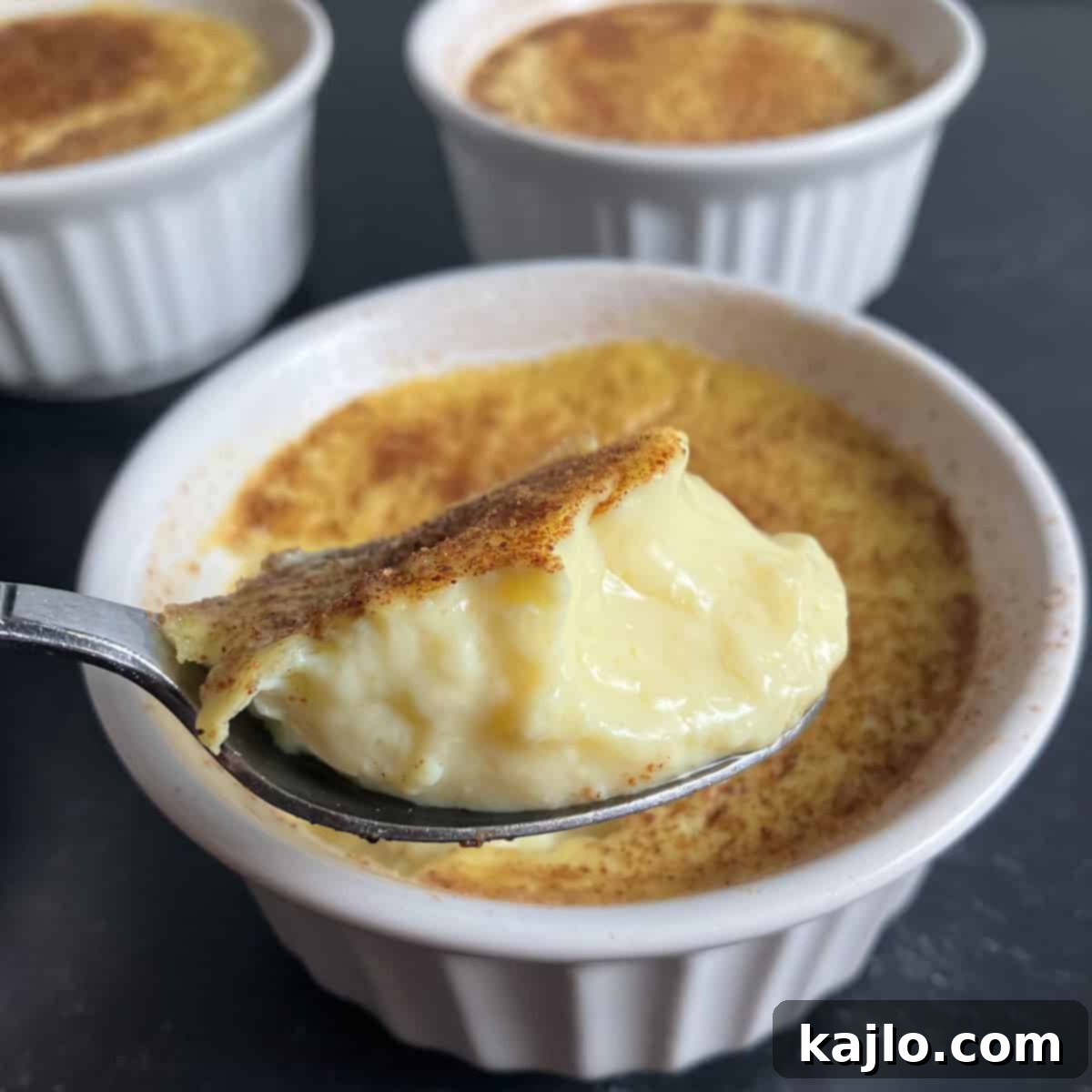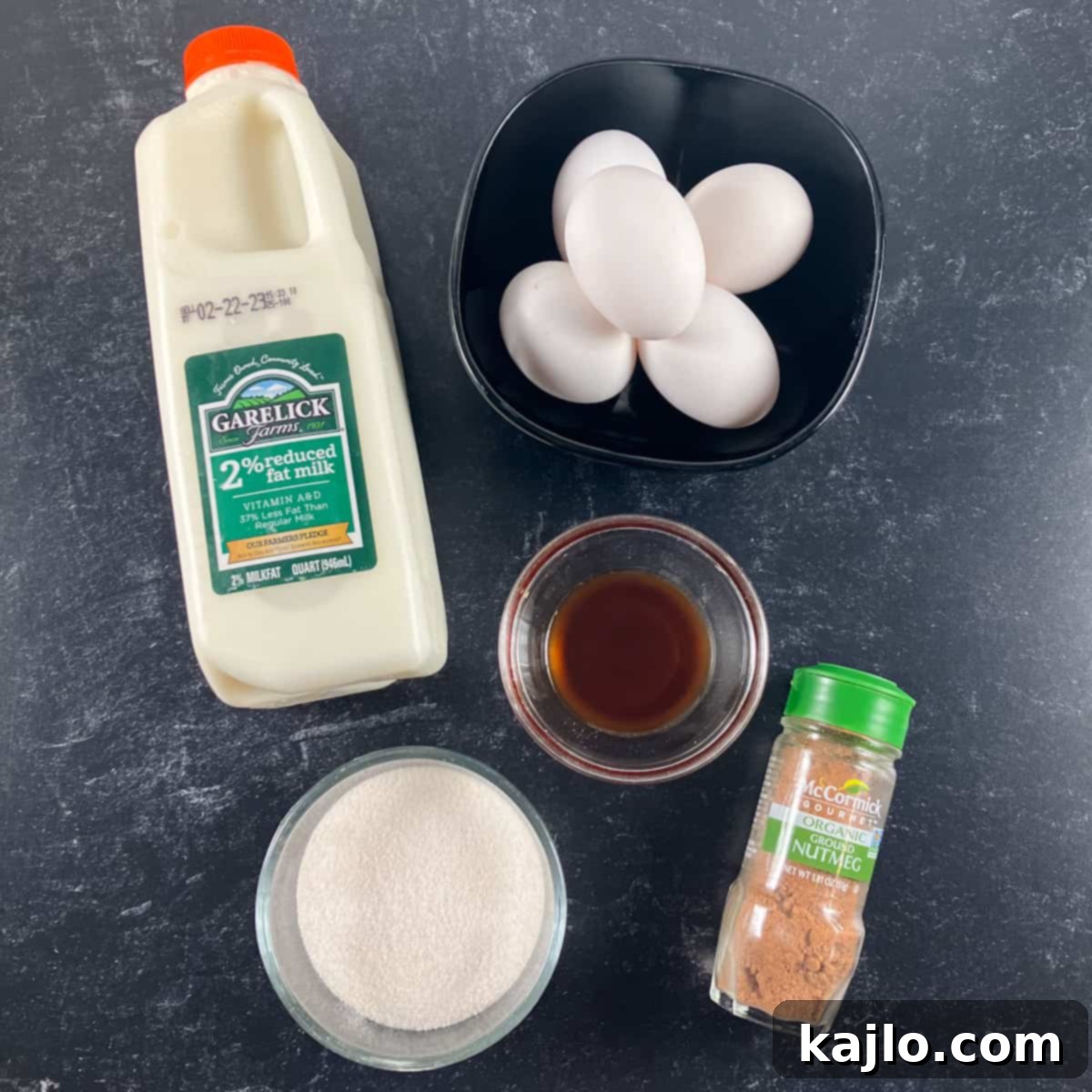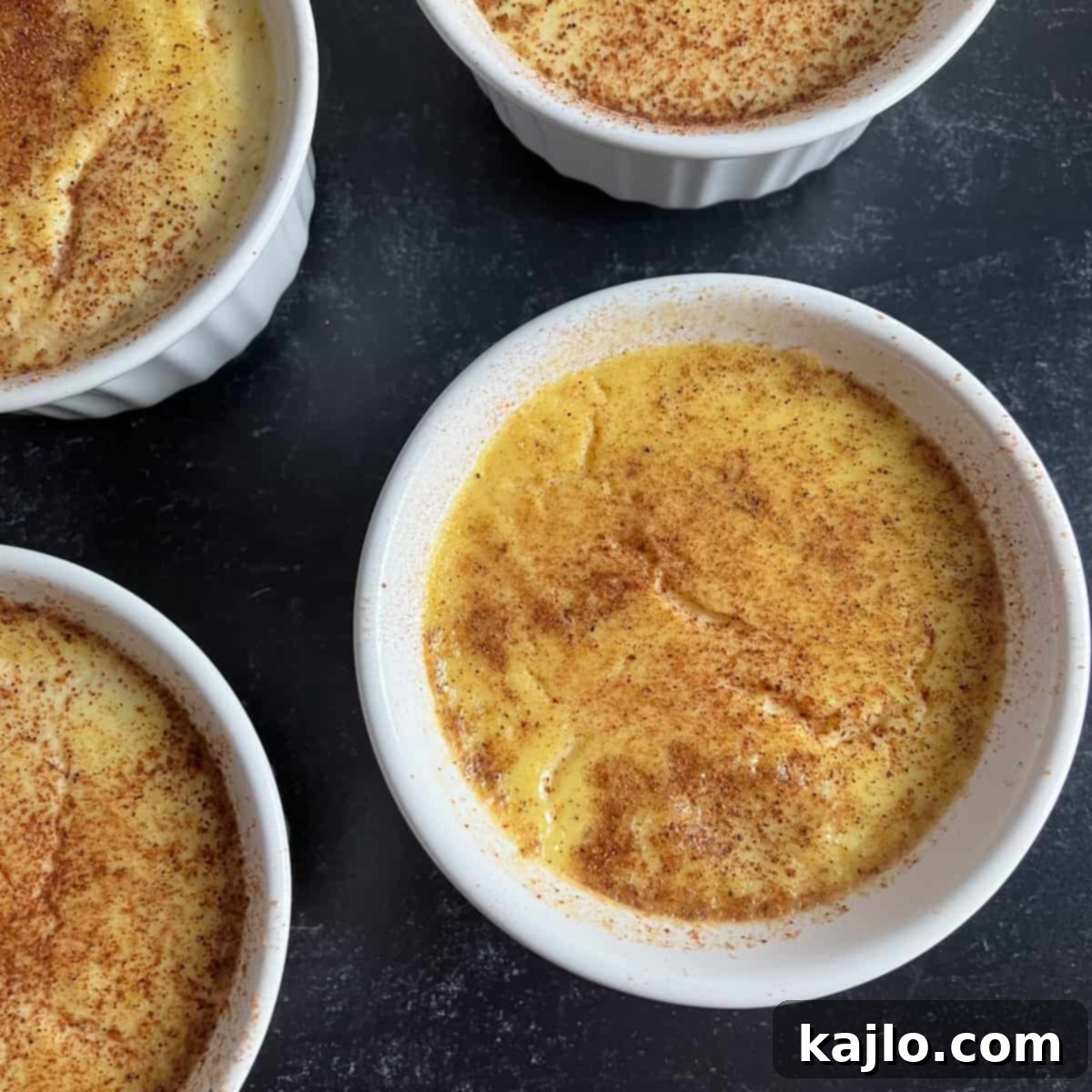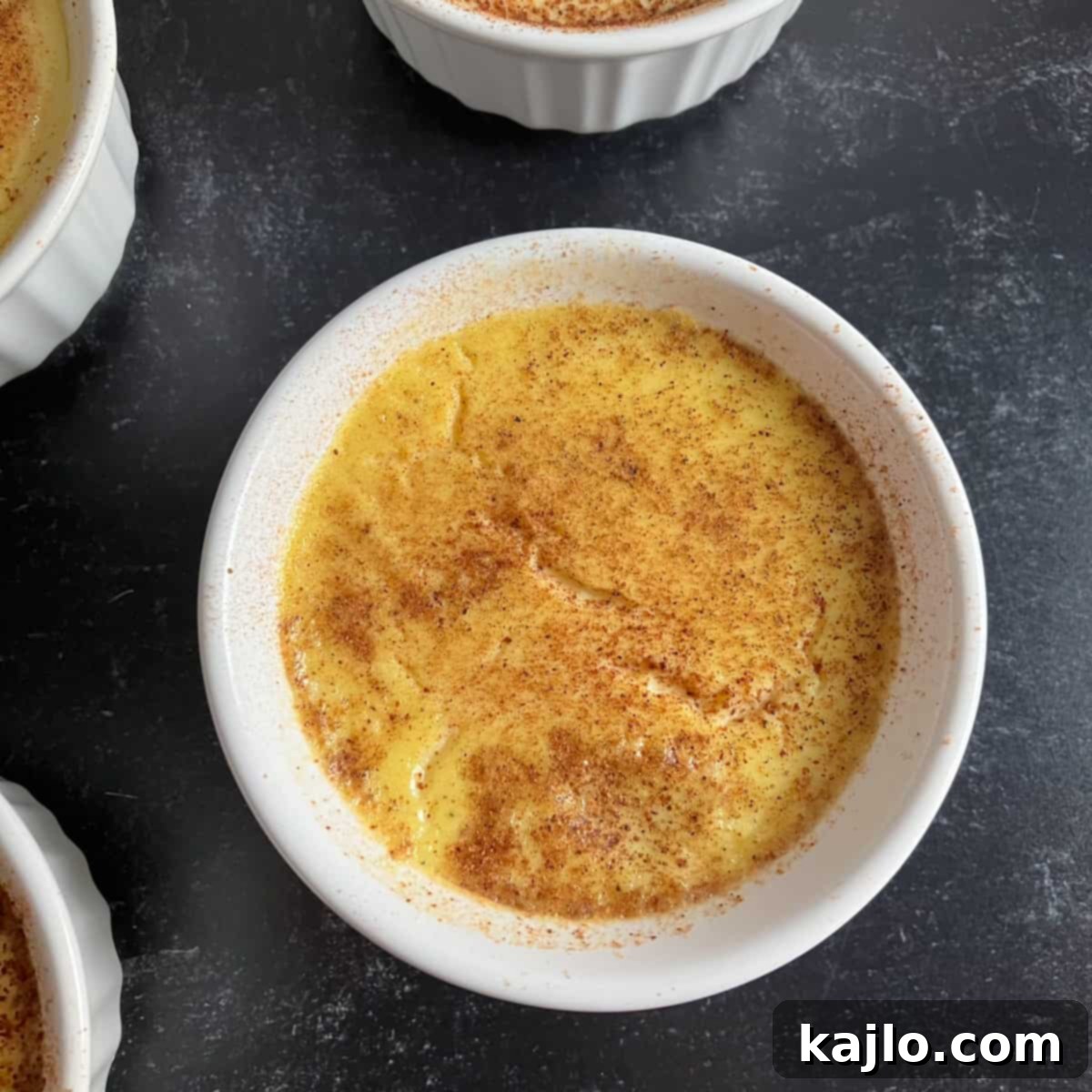Mastering Sugar-Free Custard: Your Ultimate Guide to Low-Carb & Keto-Friendly Delights
Embark on a culinary journey to create the perfect sugar-free custard – a delightful dessert that doesn’t compromise on flavor or your dietary goals. This comprehensive guide reveals how to craft a truly irresistible low-carb custard and low-sugar custard, entirely free from added sugars. Whether you’re navigating the complexities of a keto diet, managing blood sugar levels, or simply seeking a healthier sweet treat, our meticulously developed sugar-free egg custard recipe is designed to satisfy. We’ll explore critical questions like “is sugar-free custard keto?“, dive into calorie and carbohydrate information, and provide the ultimate recipe for a silky, creamy, and guilt-free indulgence. Say goodbye to carb-laden desserts and embrace this delicious diet custard for your weight loss journey or healthy lifestyle.

Unveiling the Keto Potential: Is Sugar-Free Custard Truly Keto?
The question, “is sugar-free custard keto?” often arises, and the answer hinges on your ingredient choices. A truly ketogenic vanilla custard is characterized by the complete absence of sugar from sweeteners, fruits, or high-lactose dairy, along with no carb-heavy thickeners. To transform this classic dessert into a bona fide keto custard recipe, the key modification is substituting milk with heavy cream. This drastically reduces the carbohydrate content, aligning with ketogenic principles.
However, if your primary goal for enjoying this diabetic custard recipe is weight loss, I strongly advise against this heavy cream substitution. While whipping cream indeed contains fewer carbohydrates than 2% milk, it is significantly higher in saturated fat and calories. Opting for cream instead of milk in this recipe can add approximately 340 calories per serving, which can quickly derail a calorie deficit.
Successful weight loss fundamentally relies on maintaining a consistent calorie deficit, regardless of whether you follow a low-carb, keto, or other dietary approach. A common pitfall for individuals on a keto diet is consuming an excessive amount of calories, often derived from high-fat foods. Making intelligent, small ingredient swaps, such as choosing 2% milk over heavy cream, allows you to enjoy satisfying portions of your favorite treats while keeping the overall calorie count lower. This way, you don’t sacrifice volume or enjoyment for your health goals.
Therefore, if weight management is your priority, I highly recommend adhering to this no-cream custard recipe for a delicious and genuinely low-sugar dessert. Our taste testers found it incredibly satisfying, agreeing that its rich flavor profile didn’t taste like a “diet dessert” at all. It’s a testament to how simple, wholesome ingredients can create a truly indulgent experience without added sugars.
Essential Ingredients for Your Perfect Sugar-Free Custard
Crafting a delectable custard without sugar requires a careful selection of ingredients. Here’s a detailed look at what you’ll need to create this simple yet elegant dessert:
- 2 Egg Yolks: These contribute to the custard’s rich color, silky texture, and overall decadence. Separating them from the whites is crucial for the classic custard consistency.
- 3 Large Eggs: Whole eggs provide structure and body to the custard, ensuring it sets beautifully.
- ½ cup Swerve Granular Sweetener: Our chosen sugar substitute for custard. Swerve is an erythritol-based sweetener that measures cup-for-cup like sugar, making it ideal for baking and minimizing the need for recipe adjustments. It provides sweetness without the calories or blood sugar impact of traditional sugar.
- Pinch of Sea Salt: A small amount of salt enhances the overall flavor of the custard, balancing the sweetness and bringing out the eggy notes.
- 3 cups Hot Milk, 2%: The foundation of our custard. Using 2% milk strikes a balance between richness and calorie awareness. Ensure the milk is hot (approximately 120°F/49°C) but not boiling to prevent the eggs from scrambling when combined.
- 2 teaspoons Vanilla Extract: A classic flavoring that adds warmth and depth to the custard. Use a good quality pure vanilla extract for the best results.
- Nutmeg: A sprinkle of freshly ground nutmeg on top before baking adds a traditional, aromatic finish that complements the creamy custard perfectly.
- Cooking Spray: Essential for greasing your ramekins, ensuring the custard releases easily after baking.

For preparation, you’ll find an egg separator incredibly useful for cleanly separating yolks from whites. Six 7-ounce ramekins are ideal for individual servings and even baking. A large roasting pan will serve as your water bath, crucial for gentle, even cooking. If ramekins aren’t available, a large baking dish (1½-2 quarts) can be used, though be mindful that the baking time will likely need to be adjusted and potentially increased.
Exploring Dairy and Sweetener Alternatives for Your Custard
This particular recipe yields a naturally gluten-free custard, as the eggs serve as the primary thickener, eliminating the need for any gluten-containing flours or starches. For those aiming to create an easy keto custard with a higher fat content, you can substitute the 3 cups of 2% milk with 2 cups of heavy cream and 1 cup of unsweetened almond milk. However, remember this variation will significantly increase the calorie count.
When considering dairy alternatives, it’s important to note that substituting all of the dairy milk with thin non-dairy options like unsweetened almond milk or coconut milk (from a carton) is not recommended, as the custard may not set properly. These thinner liquids lack the necessary fat and protein content to create the desired creamy, firm texture. You might achieve a successful set with a thicker non-dairy milk, such as full-fat soymilk. If you decide to experiment with this, please share your results in the comments below – your feedback is invaluable!
Does Custard Truly Require Sugar?
The short answer is no, custard doesn’t strictly *need* traditional sugar, but it does require some form of sweetener to achieve its characteristic dessert-like quality. Without any sweetening agent, what you’d end up with is essentially a savory baked egg dish, far from the delightful treat we know as custard. The simplest and most effective way to make custard without sugar is by replacing regular granulated sugar with a 1:1 sugar substitute, such as Swerve.
This particular recipe is a cherished family heirloom, originally penned on a well-worn index card. The only modification I’ve made to this classic recipe is swapping out the conventional sugar for Swerve, and I’m thrilled to report that it works absolutely perfectly, yielding a custard that is indistinguishable in taste and texture from its sugary counterpart.
Can You Use Stevia to Make Custard?
Yes, you can certainly use a stevia blend or monk fruit sweetener in this recipe, provided that it is formulated to measure 1:1 like granulated sugar. For instance, products like Splenda Magic Baker, which combines erythritol, allulose, and stevia extract, are designed to be used in the same quantities as sugar. Using pure stevia powder or a concentrated stevia extract, however, will alter the liquid-to-dry ingredient proportions significantly, and the custard may not achieve the desired set or consistency. Always opt for 1:1 ratio sugar substitutes for best results in this recipe.
🍮 How to Make Sugar-Free Custard: A Step-by-Step Guide
Follow these simple, step-by-step instructions to create your own luscious sugar-free custard recipe right at home. The process is straightforward, ensuring a smooth and perfectly set dessert every time.

1. Prepare Your Oven and Ramekins:
Preheat your oven to 325°F (163°C). Take six 7-ounce ramekins (which hold approximately ⅞ cup each) and generously spray the inside of each with cooking spray. This crucial step prevents the custard from sticking and ensures easy removal after baking. Arrange the prepared ramekins within a large, shallow roasting pan.
2. Whisk Eggs and Sweetener:
In a medium mixing bowl, gently beat the three large eggs and two egg yolks together until they are just combined and smooth. Avoid over-beating, as this can incorporate too much air, leading to a foamy texture. Next, stir in the ½ cup of Swerve granular sweetener and the pinch of sea salt. Mix until the sweetener is fully dissolved and thoroughly incorporated with the egg mixture.
3. Incorporate Warm Milk and Vanilla:
Gradually whisk the hot milk (at around 120°F or 49°C – crucial that it’s hot but not boiling!) into the egg mixture. It’s essential to whisk constantly as you pour to temper the eggs, preventing them from scrambling. If the milk is too hot and partially cooks the eggs, you might see small lumps. Should this happen, don’t despair; you can often save the custard by carefully straining the mixture through a fine-mesh sieve. Finally, add the 2 teaspoons of vanilla extract and whisk once more to ensure it’s evenly distributed, infusing the custard with its delightful aroma.
4. Set Up the Water Bath:
Once your custard mixture is prepared, fill the shallow roasting pan, containing the ramekins, with hot water. The water should come up about 1 inch deep (2.54 cm) around the ramekins. This water bath (or bain-marie) creates a gentle, moist cooking environment, which is vital for baking custards evenly and preventing them from cracking or becoming rubbery. It ensures a silky-smooth texture.
5. Bake to Perfection:
Sprinkle the tops of the filled ramekins with a light dusting of ground nutmeg. Carefully place the roasting pan into the preheated oven on an oven rack positioned approximately one-third down from the top. This placement helps ensure even heat distribution and prevents the tops from browning too quickly.

6. Monitor for Doneness:
Bake the custards until they are set. A simple test for doneness is to insert a knife into the center of a custard; if it comes out clean, your custard is ready. In my experience, this typically takes about 90 minutes. However, baking times can vary, so it’s wise to begin checking the custards after 45 minutes, just in case they set earlier. My family’s old recipe card notes a 45-minute bake time, but I’ve personally never seen them set that quickly, so patience is key for the best results!
7. Cool and Serve:
Once baked, carefully remove the ramekins from the hot water bath using tongs. Allow them to rest for at least 10 minutes. During this time, they will continue to firm up slightly. For an elegant presentation, you can dust the tops of the custards with a little extra ground nutmeg or a sprinkle of cinnamon just before serving. Enjoy your custard with no sugar warm or chilled.

For an extra special, decadent treat, consider topping your low-carb egg custard with a vibrant medley of fresh berries and a dollop of low-carb coconut cream. Raspberries, blueberries, or sliced strawberries would all provide a wonderful burst of flavor and a beautiful contrast to the creamy custard.
Can You Freeze Custard?
While technically possible, I generally do not recommend freezing custard. The freezing and thawing process tends to disrupt its delicate emulsion, resulting in a watery, granular, or otherwise unappealing texture. It simply doesn’t retain its smooth, creamy consistency well. Instead, any leftover custard can be stored in the refrigerator for up to 3-4 days. For optimal freshness and to prevent them from absorbing fridge odors, wrap the cooled ramekins tightly in plastic wrap before storing. Custard can be enjoyed chilled, though many, myself included, find its warm, comforting flavor to be particularly delightful.
📋 Sugar-Free Custard Calories & Nutritional Insights
Understanding the nutritional profile of your food is crucial, especially when managing dietary needs. So, how many calories are in sugar-free custard? Does sugar-free custard have carbs? Our carefully crafted sugar-free custard delivers a healthy and satisfying dessert option. One serving of this delicious recipe contains approximately 118 calories, 6.3 grams of net carbohydrates, and a robust 8 grams of protein.
It’s important to clarify that the carbohydrate count provided here refers to net carbohydrates, which are calculated by subtracting fiber and sugar alcohols (like erythritol from Swerve) from the total carbohydrates. The approximately 6 grams of sugar present in this recipe are all naturally occurring sugars found in the milk, not added sugars. This makes it an excellent choice for those monitoring their sugar intake or looking for diabetic-friendly desserts.

Frequently Asked Questions About Sugar-Free Custard
Can You Easily Find Diabetic Custard?
For those wondering where to buy sugar-free custard for diabetics, you’ll find that ready-made sugar-free custard cups (often marketed as sugar-free pudding) are widely available in the dessert or dairy aisle of most major grocery stores in the US. In the UK, options like ‘less sugar’ versions of Tesco custard and Ambrosia Devon custard can be found, though it’s important to note these are generally reduced-sugar, not necessarily suitable for a strict keto diet.
Is There a Sugar-Free Custard Powder Option?
Yes, absolutely! The classic Bird’s custard powder is inherently sugar-free. To prepare it as a sugar-free custard, simply follow the package directions, substituting traditional sugar with your preferred 1:1 sugar-free sugar substitute. This offers a convenient way to enjoy custard without added sugars.
How to Make Sugar-Free Custard for Babies?
When preparing sugar-free custard for babies, it’s important to avoid sugar substitutes, as they are not recommended for infants. Instead, baby-friendly sugar-free custard is essentially a simplified baked egg dish, thinned with milk. This approach focuses on natural ingredients. For a detailed guide on how to make it, you can find specific instructions here.
How to Make a Sugar-Free Custard Recipe with Splenda?
If you prefer to use Splenda, you can certainly adapt this recipe to create a sugar-free custard with Splenda. The key is to use a Splenda product that is designed to substitute sugar in a 1:1 ratio. For example, products like Splenda Granulated Sweetener are formulated for cup-for-cup replacement, making them ideal for this recipe. Always double-check that the Splenda variety you choose measures identically to regular sugar to ensure proper consistency and sweetness.
What Are the 3 Main Types of Custard?
Custards are incredibly versatile, and generally, they can be categorized into three main types, each with distinct preparation methods and characteristics, as explained by MasterClass:
- Baked Custards: These are arguably the most common and are typically cooked gently in an oven, often within a bain-marie (water bath). This method, which we utilize in our recipe, ensures a slow, even set, resulting in a smooth and delicate texture, like crème brûlée or flan.
- Steamed Custards: Popular in various Asian cuisines, steamed custards often lean towards the savory side. They are cooked in a steamer, producing a very tender, almost quivering consistency.
- Stirred Custards: These custards are cooked on the stovetop, constantly stirred until they thicken. They tend to have a thinner, sauce-like consistency and are often used as a base for other desserts, like crème anglaise, or served alongside pies and puddings.

🍪 Explore More Low-Carb Dessert Recipes
After you’ve savored our incredible low-carb custard recipe, you might be inspired to explore other delightful low-carb desserts that fit your healthy lifestyle. Here are some fantastic options to try:
- Sugar-Free Strawberry Shortcake: A refreshing and classic dessert, reinvented without the sugar.
- Sugar-Free Flan: Essentially a keto egg custard, often topped with a rich, toasted sugar or caramel-like sauce made with sugar substitutes.
- Apple Crisp (Sugar-Free): Enjoy the comforting flavors of apple crisp, made entirely sugar-free.
- Sugar-Free Dalgona Coffee: A trendy and delicious whipped coffee treat, made without any added sugar, and even caffeine-free options.
Sugar-Free Custard Recipe (Low Sugar Low Carb Custard)
Author: Summer Yule
Learn how to make a delicious and easy sugar-free custard! This low-carb custard is a delightful low-sugar custard with no added sugar, perfect for a healthy dessert or weight loss plan.
Cook Time: 45 mins | Total Time: 45 mins
Course: Snack | Cuisine: British
Servings: 6 | Calories: 118 kcal
Ingredients
- 2 large egg yolks
- 3 large eggs
- ½ cup Swerve, granular
- Pinch of sea salt
- 3 cups hot milk, 2% (not boiling, about 120°F/49°C)
- 2 teaspoons vanilla extract
- Ground nutmeg
- Cooking spray of choice
Instructions
- Preheat the oven to 325°F (163°C). Spray six 7-ounce ramekins (⅞ cup) with cooking spray.
- Beat the eggs and egg yolks in a mixing bowl just to blend. Stir in the Swerve and salt.
- Whisk in the hot milk (remember, it should be about 120°F or 49°C), stirring constantly. Add the vanilla and whisk again. If the milk is too hot, it will partially cook the eggs and make the custard lumpy. (You can try to save it by straining the mixture if this happens.)
- Fill a shallow roasting pan about 1-inch deep (2.54 cm) with hot water to make a water bath. Divide the custard mixture between the prepared ramekins and place in the roasting pan.
- Sprinkle the ramekins with nutmeg and place in the oven on an oven rack about ⅓ down from the top.
- Bake until the custard sets – a knife inserted into the center of a custard should come out clean. This always takes about 90 minutes for me, but check the custards after 45 minutes in case they set early. (This is the time noted on my family’s old recipe card for this recipe, but I’ve never seen them set this fast.)
- Carefully lift the custards from the water bath with tongs when done and let them rest for 10 minutes. You can dust the tops of the custards with a little more nutmeg before serving.
Equipment
- 7 oz ramekins
- Egg Separator
- Roasting Pan
- Tongs
Notes
💭 Expert Tips from Dietitian Summer Yule
This is a level 1 recipe (may help support fat loss). Is custard healthier than most ice cream? American custard sometimes refers to a frozen dessert like ice cream, except with more egg yolk and less air to make it dense (source). Because it is less airy, frozen custard tends to be higher in fat and calories by volume than regular ice cream.
In this recipe, we have something more similar to an English custard, which is like a thick American pudding. Since this recipe has no sugar added, nearly all the calories, vitamins, and minerals come from milk and eggs. This sugar-free custard is a nutritious dessert that is great if you’re looking for low-calorie desserts with protein.
Nutrition information is for one serving. Carbs listed are net carbs (total carbohydrates minus fiber and erythritol).
Nutrition Info Disclaimer
All recipes on this website may or may not be appropriate for you, depending on your medical needs and personal preferences. Consult with a registered dietitian or your physician if you need help determining the dietary pattern that may be best for you.
The nutrition information is an estimate provided as a courtesy. It will differ depending on the specific brands and ingredients that you use. Calorie information on food labels may be inaccurate, so please don’t sweat the numbers too much.
“To taste” means to your preferences, which may have to be visual to follow food safety rules. Please don’t eat undercooked food.
Nutrition
Carbohydrates: 6.3 g
Protein: 8 g
Fat: 6.3 g
Saturated Fat: 2.6 g
Potassium: 200.2 mg
Vitamin A: 3 % DV
Vitamin C: 0.4 % DV
Calcium: 17.1 % DV
Iron: 2.9 % DV
Keywords
custard no sugar, custard sugar free, easy sugar free custard, no sugar custard, recipe for sugar free custard, sugar free custard, sugar free custard no cream, sugar free custard recipe, sugar free egg custard, sugar free egg custard recipe, keto custard, low carb dessert, diabetic friendly dessert
Join our community! Subscribe for all of the latest and greatest recipes, and follow me on Facebook, Pinterest, Instagram, and YouTube!

